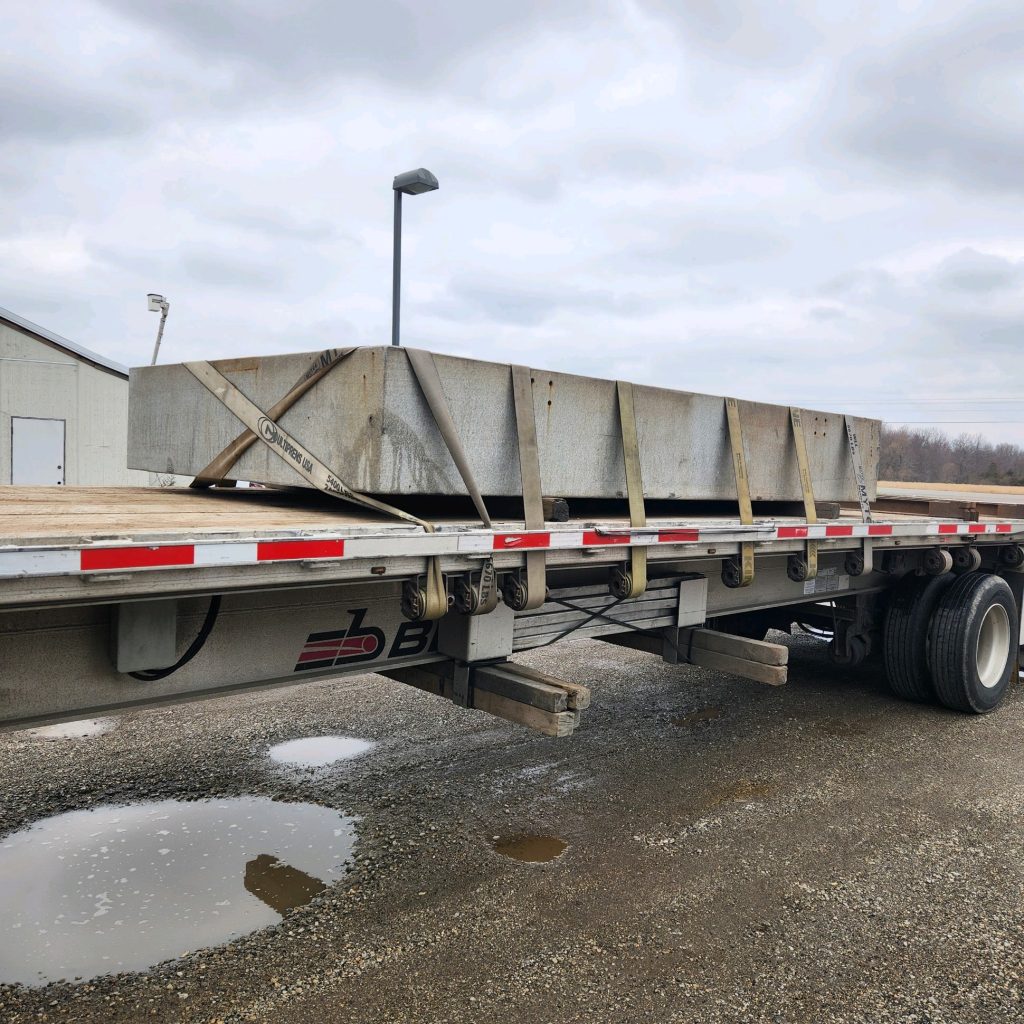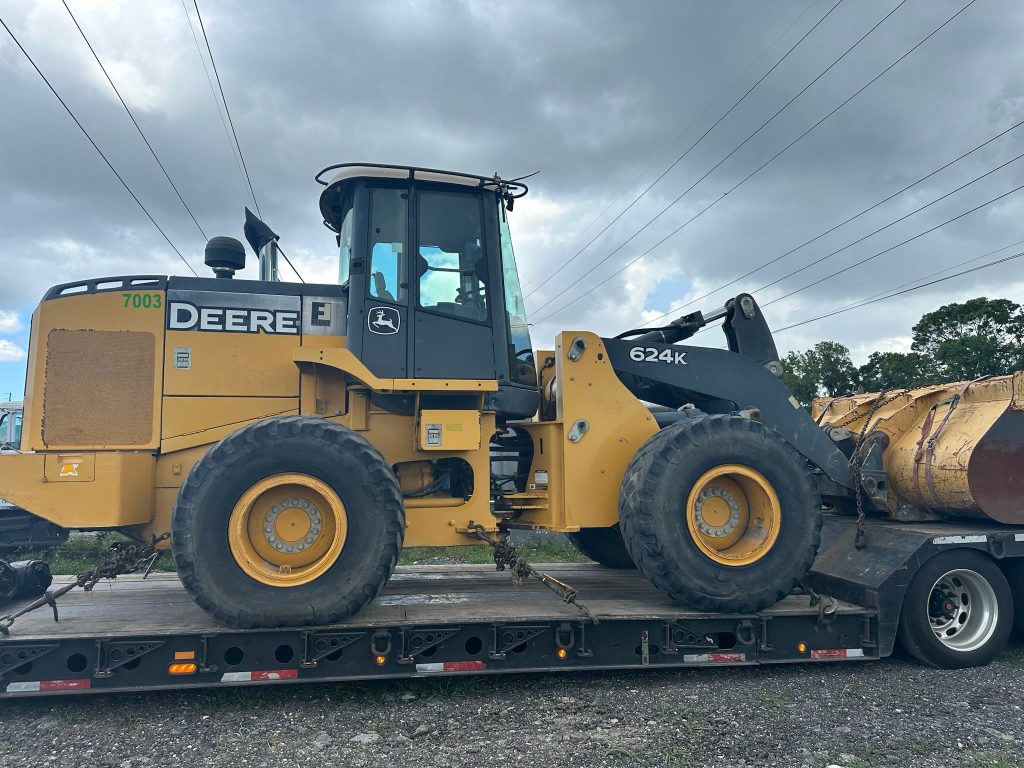Difference Between Lowboy and Step Deck Trailer: Side-by-Side Comparison
Freedom Heavy Haul can offer expedited Pickup and Delivery for any size shipment anywhere in the USA. Contact us today for No Hassle, No Pressure Pricing.
In freight transportation, understanding the different types of trailers is crucial for effective logistics management. This article will teach you the difference between lowboy and step deck trailer. This article also provides an in-depth look at the difference between lowboy and step-deck trailers. Each has unique features and applications, and choosing the right one can significantly impact cost, efficiency, and safety in freight transportation.
Introduction to Trailer Types
The transportation industry utilizes a variety of trailers, each designed for specific kinds of cargo and transport conditions. This introduction will provide an overview of these variations, setting the stage for a focused comparison between lowboy and step-deck trailers.

Overview of Trailer Varieties in Freight Transportation
Trailers come in various designs, including flatbeds, dry vans, refrigerated units, and more. Understanding these types helps select the right equipment for specific freight needs, enhancing efficiency and reducing transportation costs.
Difference Between Lowboy and Step Deck Trailer
Here is how these trailers are different from each other:
Step-Deck Trailers
Step-deck trailers, also known as drop-deck trailers, are a versatile solution in the transportation industry. They are characterized by their two-level design, which allows for the transport of taller items that wouldn’t fit on a standard flatbed.
Definition and Features of a Step-Deck Trailer
A step-deck trailer features an upper and lower deck, with the lower deck sitting closer to the ground. This design increases the trailer’s overall height capacity, making it ideal for transporting taller equipment and machinery.

Primary Applications: What Step-Deck Trailers Are Typically Used For
Step-deck trailers are best suited for transporting tall, heavy equipment like construction machinery, large vehicles, and oversized items that exceed the height limits of a flatbed trailer but don’t require the specialized features of a lowboy trailer.
Limits of Use: Inappropriate Uses for Step-Deck Trailers
Despite their versatility, step-deck trailers are not suitable for extremely heavy or overly tall cargo that would be better served by a lowboy trailer. They also aren’t ideal for standard-sized cargo that can be efficiently hauled by simpler trailer types like dry vans or flatbeds.
Cost Analysis: How Step-Deck Trailers Affect Transportation Expenses
Using a step-deck trailer can influence transportation costs in several ways. Their specialized design might increase rental or purchase costs, but their ability to carry tall cargo can reduce the need for disassembly and multiple trips, ultimately saving money.
Lowboy Trailers
Lowboy trailers are distinct in their design, sitting extremely low to the ground, which allows them to carry very heavy and tall items. They are especially useful for hauling heavy construction machinery.
Characteristics and Design of Lowboy Trailers
The defining feature of a lowboy trailer is its low profile, which provides a lower center of gravity and the ability to carry taller loads legally. They are typically used for hauling heavy equipment like bulldozers, industrial machinery, and other large items.
Optimal Uses for Lowboy Trailers
Due to their design, lowboy trailers are ideal for transporting heavy construction equipment, large industrial machinery, and other heavy loads that require a stable and low-to-the-ground transport solution.

When Not to Use a Lowboy Trailer
Lowboy trailers are not suitable for general cargo transportation. They are specialized for heavy loads and may be an inefficient choice for lighter, less bulky cargo.
The Impact of Using a Lowboy on Costs
The cost of using a lowboy trailer is often higher due to their specialized nature. However, for heavy and oversized loads, they can be the most cost-effective solution, reducing the need for multiple trips or additional transport equipment.
Lowboy Trailers with Removable Goosenecks (RGNs)
Lowboy trailers with Removable Goosenecks (RGNs) add another level of versatility to this type of trailer, making them even more useful in certain transportation scenarios.
Advantages and Applications of RGNs
RGNs allow the front of the trailer to be detached, creating a ramp for easy loading and unloading of heavy machinery. This feature is particularly beneficial for equipment that can be driven onto the trailer, such as bulldozers or tractors.
Comparative Analysis
A side-by-side comparison of lowboy and step-deck trailers can help in understanding their distinct advantages and limitations, aiding in the decision-making process for specific freight needs. Here is a breakdown between the two trailers:
| Feature | Lowboy Trailer | Step Deck Trailer |
|---|---|---|
| Design | Features a lower deck height, typically closer to the ground, ideal for hauling tall or heavy equipment. | Has an upper and lower deck, allowing for the transportation of taller items that wouldn’t fit under standard overpasses. |
| Height | Lower deck height, often around 24 to 29.6 inches from the ground. | The upper deck is standard trailer height, while the lower deck is slightly raised compared to a lowboy. |
| Load Capacity | Designed for heavy loads, often used for oversized or heavy machinery like construction equipment. | Good for heavy loads but more versatile for different types of cargo, including vehicles and machinery. |
| Versatility | More specialized for heavy or oversized loads. | More versatile in the type of cargo it can carry due to the step deck design. |
| Ease of Loading | Lower height makes it easier to load heavy machinery but may require special ramps. | The step between decks can complicate loading but offers more options for different cargo types. |
| Applications | Commonly used in construction and heavy equipment industries. | Used in a variety of industries, including construction, automotive, and general freight. |
| Height Restrictions | Better for extremely tall cargo due to lower deck height. | Can handle taller loads than a standard flatbed but has height limitations due to the two-level design. |
Dimensions and Capacity: Lowboy vs Step-Deck
While both trailers can transport tall and heavy loads, the lowboy’s lower ground clearance allows for taller cargo, whereas the step-deck’s two-level design offers more versatility for a range of cargo heights.
Adaptability and Versatility: A Comparative Study
Step-deck trailers offer more versatility for a range of cargo types, but lowboys provide an unmatched capability for extremely heavy and tall loads.
Safety Considerations in Lowboy and Step-Deck Operations
Both trailer types require specific safety considerations due to their designs. The low profile of lowboys can be advantageous for heavy loads, while the step-deck’s two levels necessitate careful cargo securing to prevent shifting during transport.
Decision-Making: Choosing the Right Trailer for Your Needs
Selecting the right trailer type is a critical decision in freight transport. This section will provide guidelines to help shippers and transporters make informed choices based on their specific freight requirements.
Identifying the Best Equipment Type for Specific Freight Types
The choice between a lowboy and a step-deck trailer largely depends on the cargo’s dimensions, weight, and the specific requirements of the transport job.
Cost vs. Benefit Analysis for Different Trailer Types
Weighing the cost against the benefits of each trailer type is essential. While lowboys might be more expensive, their ability to handle extremely heavy loads can offer better value in certain scenarios. Conversely, step-decks are more versatile and can be a more economical choice for less specialized needs.
Expert Recommendations for Various Transportation Scenarios
Consulting with transportation experts can provide insights into the most suitable trailer type for specific scenarios. Factors such as route, cargo type, and budget constraints should all be considered.
Conclusion
In summary, both lowboy and step-deck trailers have unique advantages and applications in the transportation industry. Understanding their differences is key to making the best logistical decisions for specific freight needs.
Summary of Key Differences and Similarities
This guide has highlighted the key differences and similarities between lowboy and step-deck trailers, providing valuable insights into their respective uses and limitations.
Final Recommendations and Best Practices
The final recommendation is to carefully evaluate the specific requirements of each transport job and choose the trailer type that offers the best combination of cost-effectiveness, efficiency, and safety. Following industry best practices and consulting with experienced professionals can further ensure successful and efficient freight transportation.







